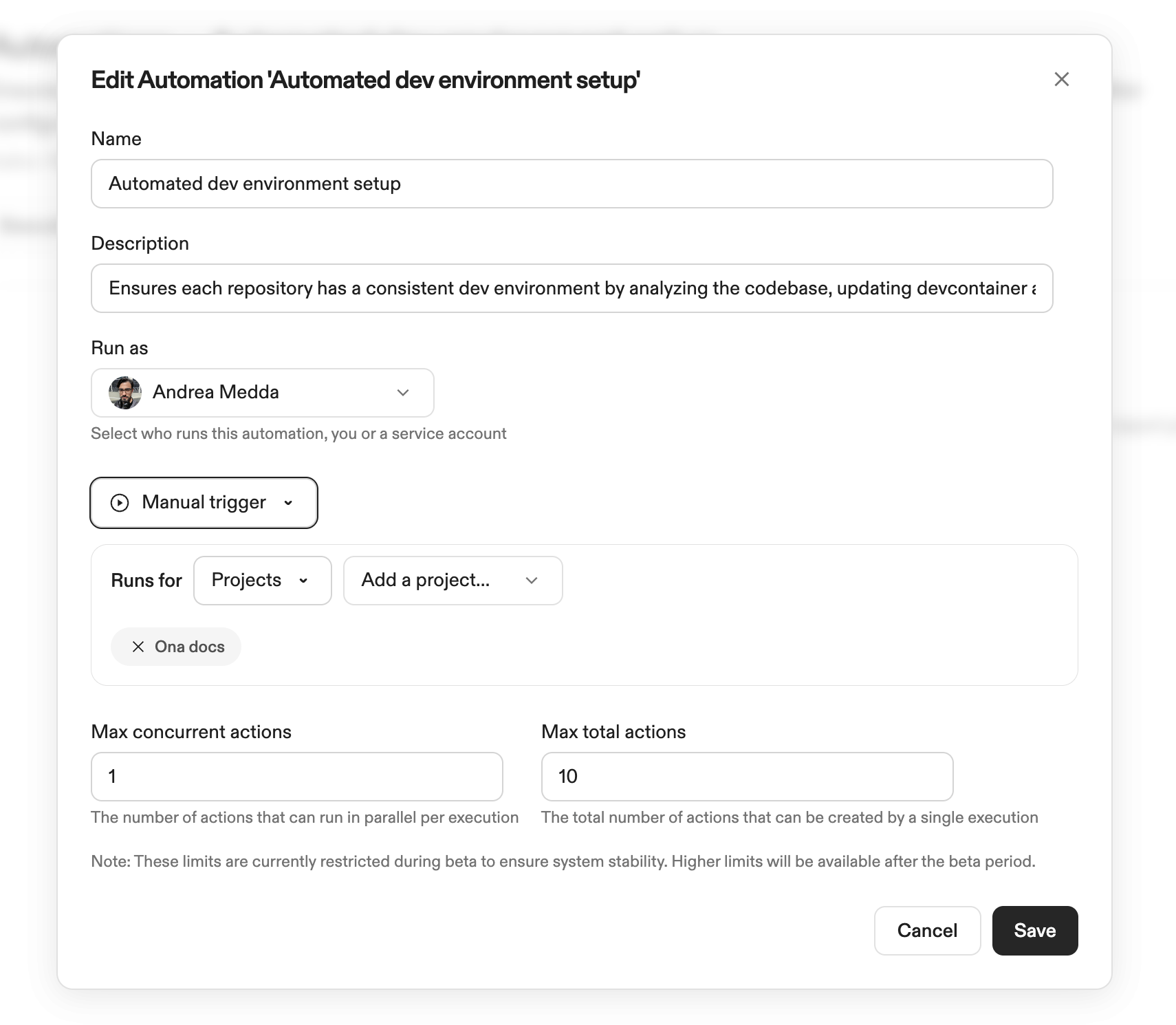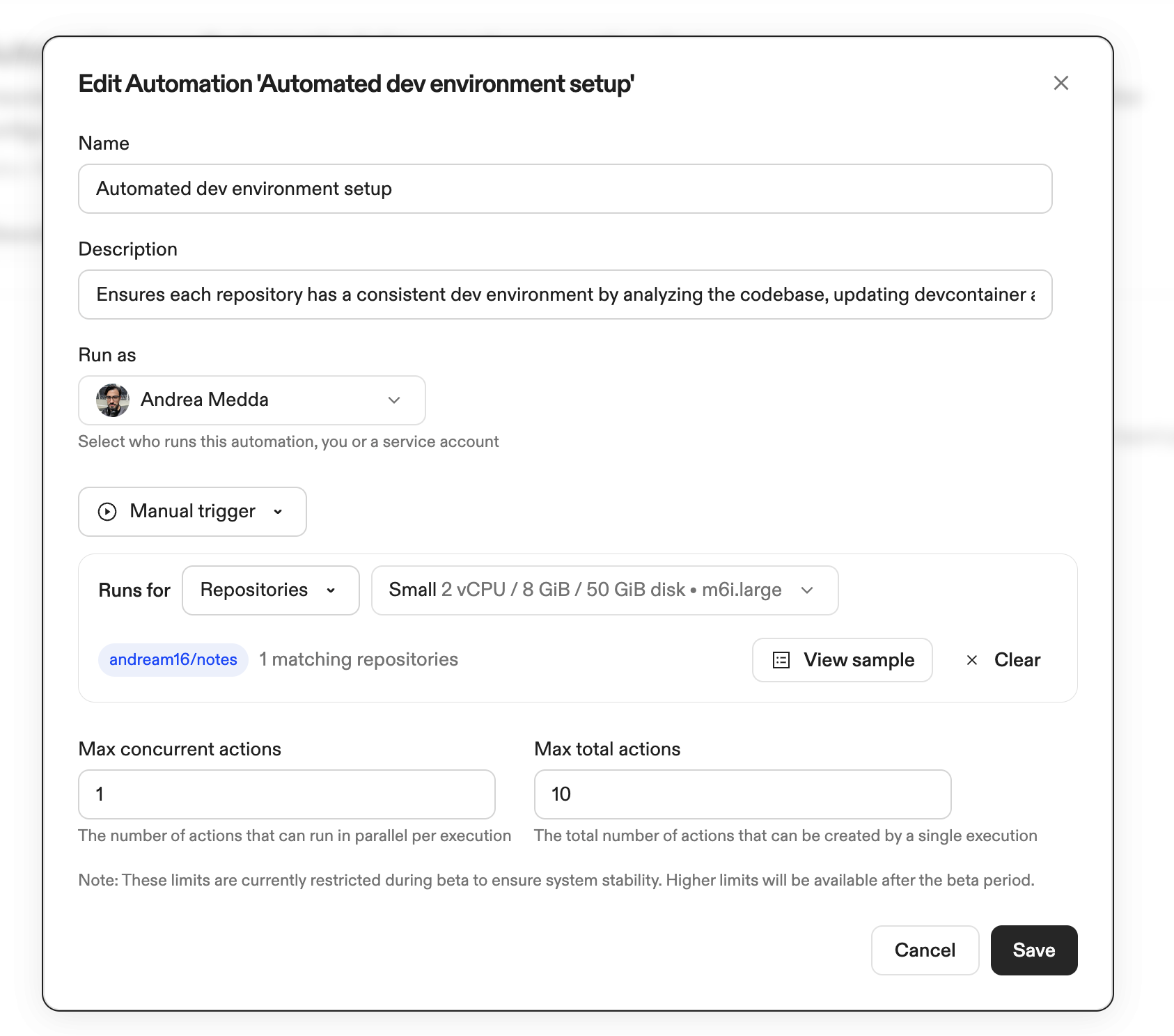What are manual triggers
Manual triggers run when you explicitly start them. Use manual triggers for:- One-time migrations or updates
- Testing automations before scheduling them
- Changes that need human judgment on timing
Configure manual triggers
When creating an automation with a manual trigger, choose your target scope. Projects vs Repositories:- Use Projects for repetitive tasks on well-known repositories that are already organized and don’t require extensive large-scale changes
- Use Repositories when performing large-scale migrations, acting on many targets simultaneously or you don’t have a project set up yet (e.g., thousands of repositories)
Target projects
Run the automation across all repositories in selected projects:- Select Projects as the target type
- Choose one or more projects from the list
- The automation will run on all repositories within those projects

Target repositories
Run the automation on specific repositories matching your criteria:- Select Repositories as the target type
- Select an environment class for the automation to use
- Enter a search query to filter repositories
backend- Matches repositories with “backend” in the owner or repository name (e.g., “backend-api”, “user-backend”, “acme/backend-services”)frontend-- Matches repositories starting with “frontend-” (e.g., “frontend-web”, “frontend-mobile”)api- Matches all repositories containing “api” (e.g., “payment-api”, “user-api”, “api-gateway”)myorg/- Matches all repositories under the “myorg” organization

Running via UI
After creating a manual automation:- Navigate to Automations in the left panel
- Find your automation in the list and click it
- Click Run to start execution
Use cases
Organization-wide policy updates
Apply new policies or standards when they’re defined: Example: Update all repositories to use the new CI/CD template- Target: All projects or repositories in the organization
- Trigger: Manual (run once after policy approval)
- Result: Consistent configuration across all repositories
Targeted refactoring
Execute code changes on specific repositories: Example: Migrate authentication library in backend services- Target: Repositories matching “backend-*”
- Trigger: Manual (run after testing on one repository)
- Result: Controlled rollout with ability to pause
Documentation standardization
Update documentation across multiple repositories: Example: Add security policy to all public repositories- Target: Repositories with specific tags
- Trigger: Manual (run when policy is finalized)
- Result: Compliance across all public-facing code
Next steps
- Run an Automation
- Review Results
- Learn about Pull Request Triggers for event-driven automation
- Learn about Time-based Triggers for scheduled automation